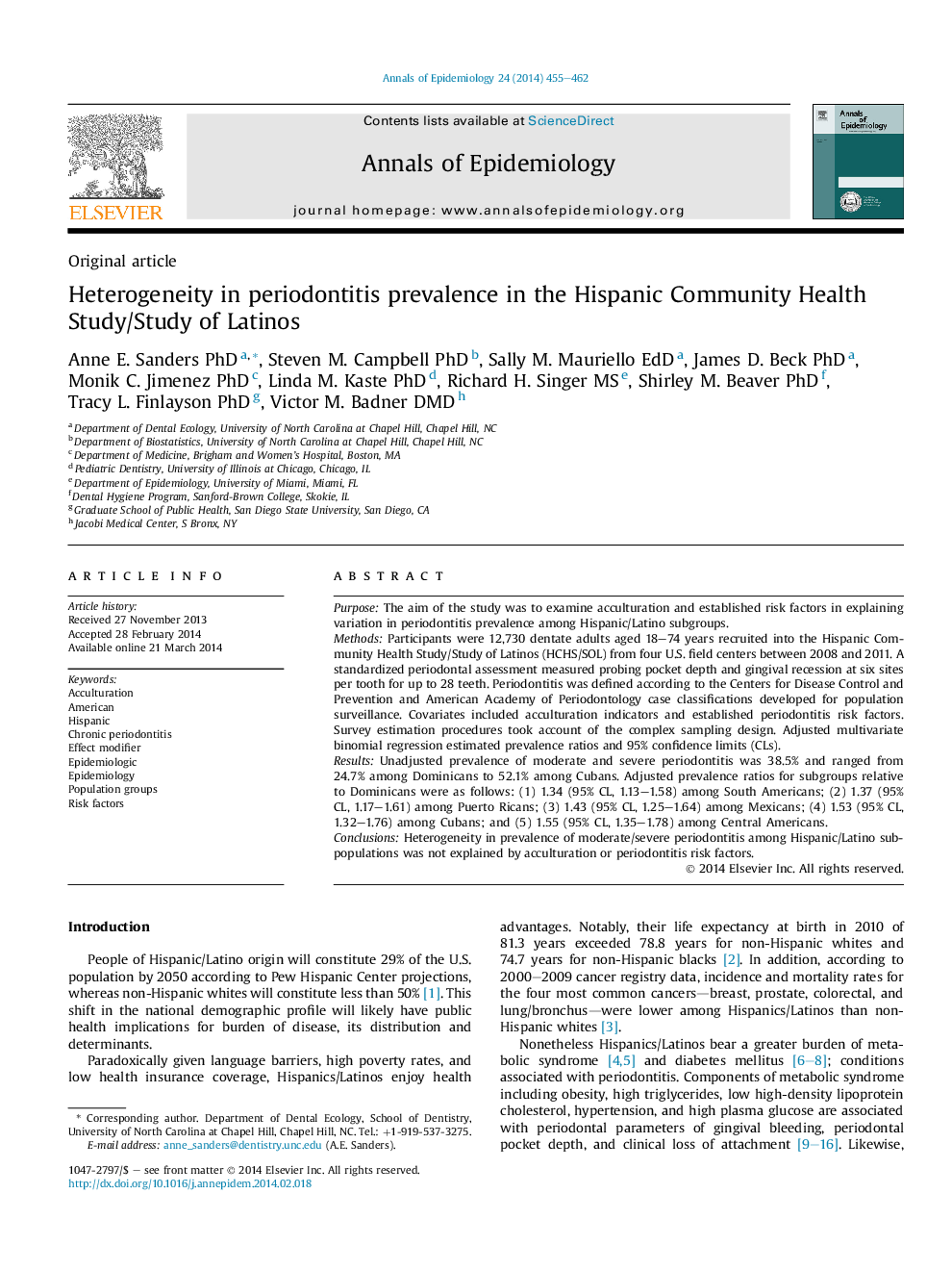| Article ID | Journal | Published Year | Pages | File Type |
|---|---|---|---|---|
| 3444286 | Annals of Epidemiology | 2014 | 8 Pages |
PurposeThe aim of the study was to examine acculturation and established risk factors in explaining variation in periodontitis prevalence among Hispanic/Latino subgroups.MethodsParticipants were 12,730 dentate adults aged 18–74 years recruited into the Hispanic Community Health Study/Study of Latinos (HCHS/SOL) from four U.S. field centers between 2008 and 2011. A standardized periodontal assessment measured probing pocket depth and gingival recession at six sites per tooth for up to 28 teeth. Periodontitis was defined according to the Centers for Disease Control and Prevention and American Academy of Periodontology case classifications developed for population surveillance. Covariates included acculturation indicators and established periodontitis risk factors. Survey estimation procedures took account of the complex sampling design. Adjusted multivariate binomial regression estimated prevalence ratios and 95% confidence limits (CLs).ResultsUnadjusted prevalence of moderate and severe periodontitis was 38.5% and ranged from 24.7% among Dominicans to 52.1% among Cubans. Adjusted prevalence ratios for subgroups relative to Dominicans were as follows: (1) 1.34 (95% CL, 1.13–1.58) among South Americans; (2) 1.37 (95% CL, 1.17–1.61) among Puerto Ricans; (3) 1.43 (95% CL, 1.25–1.64) among Mexicans; (4) 1.53 (95% CL, 1.32–1.76) among Cubans; and (5) 1.55 (95% CL, 1.35–1.78) among Central Americans.ConclusionsHeterogeneity in prevalence of moderate/severe periodontitis among Hispanic/Latino subpopulations was not explained by acculturation or periodontitis risk factors.
